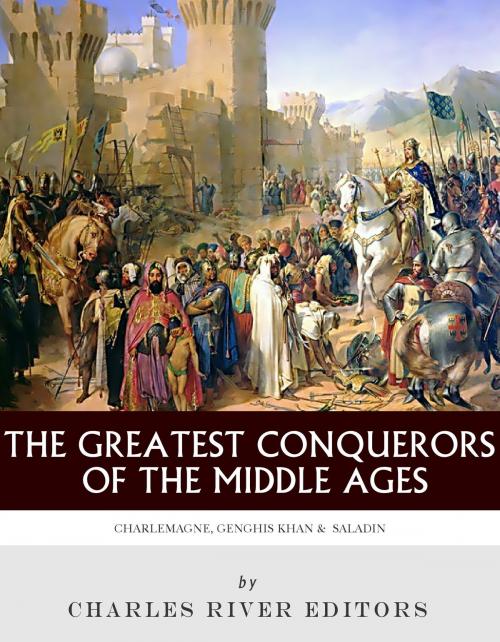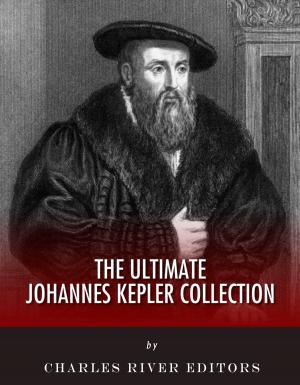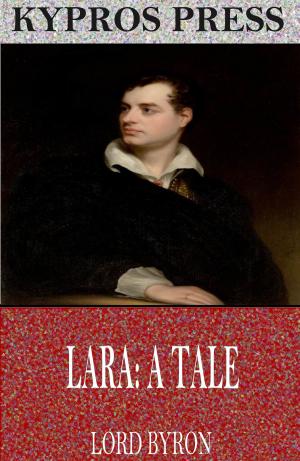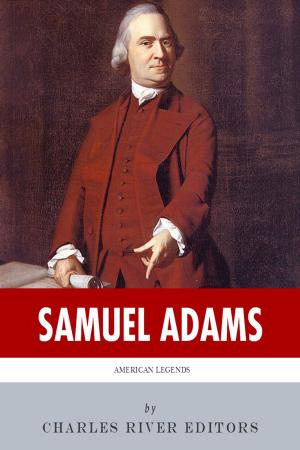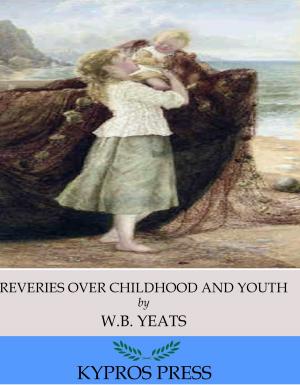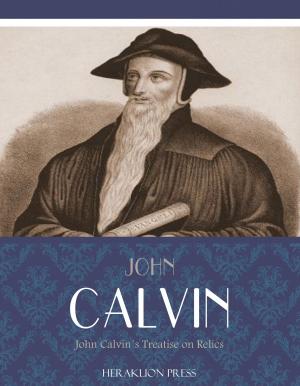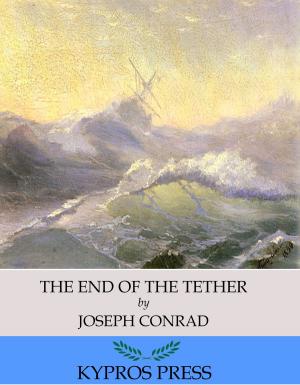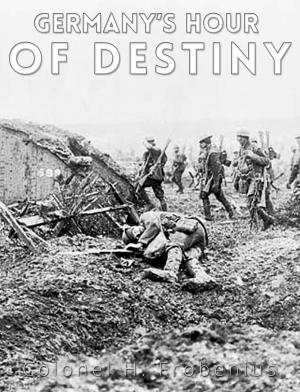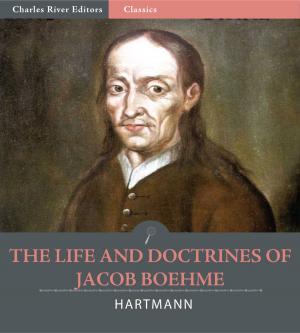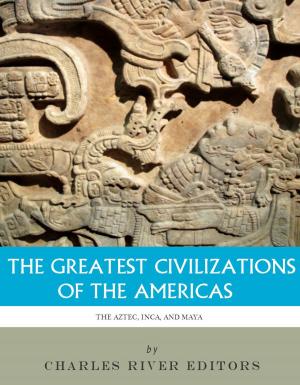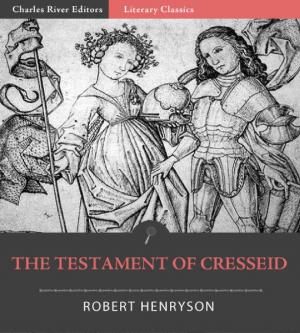The Greatest Conquerors of the Middle Ages: Charlemagne, Saladin and Genghis Khan
Nonfiction, History, Civilization, Medieval, Biography & Memoir, Historical| Author: | Charles River Editors | ISBN: | 9781475321173 |
| Publisher: | Charles River Editors | Publication: | January 12, 2013 |
| Imprint: | Language: | English |
| Author: | Charles River Editors |
| ISBN: | 9781475321173 |
| Publisher: | Charles River Editors |
| Publication: | January 12, 2013 |
| Imprint: | |
| Language: | English |
*Includes maps of each conqueror's empire and pictures depicting the conquerors and other important people and places.*Discusses legends and controversies surrounding the lives, deaths, and legacies of the conquerors. .*Includes a Bibliography for further reading.*Includes a Table of Contents. The most famous man of the Middle Ages was probably Charlemagne, and few would argue that he was also the most important man during those centuries. Upon the death of his father, Pepin the Short, in 768, Charlemagne became King of the Franks, and he proceeded to create one of the largest European empires since the collapse of Rome. Through his conquests across Western Europe and Italy, Charlemagne became the first Holy Roman Emperor after a famous imperial coronation by Pope Leo III. In becoming the first Holy Roman Emperor, Charlemagne essentially established the new order on the European continent, thereby directly influencing how European politics and royalty proceeded in the coming centuries. As if to demonstrate how large he loomed in life, Charlemagne was numbered Charles I in Germany, France, and the Holy Roman Empire. Charlemagne is also viewed as having brought about the Carolingian Renaissance, a revival of art, religion, and culture through the Catholic Church that predated the Italian Renaissance by centuries. The Carolingian Renaissance helped establish a uniform European culture, helping Charlemagne earn the title Father of Europe. In a world fascinated by men like Alexander the Great and Julius Caesar, Genghis Khan is one of historys greatest and most famous conquerors. No man, before or since, has ever started with so little and gone on to achieve so much. From a noble family but raised in poverty that drove him to the brink of starvation, Genghis Khan rose to control the second-largest empire the world has ever known (the largest being, arguably, the British Empire of the 18th and 19th centuries), and easily the largest empire conquered by a single man. And while many empires disintegrate upon the death of an emperor, like Alexander the Greats, Genghis Khans empire endured and was actually enlarged by his successors, who went on to establish dynasties that in some cases lasted for centuries.Though history is usually written by the victors, history was largely written by those who Genghis Khan and Saladin vanquished. And while that meant Genghis Khan became widely reviled, it had the opposite effect on Saladin. Saladin is widely considered one of the greatest generals in history and one of the most famous leaders of the Middle Ages, but he remains a paradox, both in personal and in historical terms. A military genius, he first served other generals and was overshadowed, late in life, by his greatest rival, Richard I of England. He was far more admired by his Christian enemies, who extolled his chivalry, than some of his Muslim rivals, who fought him for control of Egypt and Syria in the 12th century. His Christian enemies continued his name long after it was forgotten in the Middle East, only to spark a revival of his reputation in Arab culture in the 20th century. Revered as the flower of Arab culture, he was really a Kurd who nearly destroyed it. Taught to Egyptian children as a native born Egyptian hero, he was, in fact, Egypt's conqueror, the man who destroyed its native dynasty and suppressed the local Shi'ite sect. The Greatest Conquerors of the Middle Ages chronicles the amazing lives and conquests of the three men, while examining their empires and their enduring legacies. Along with pictures of important people, places and events, you will learn about Charlemagne, Saladin and Genghis Khan like you never have before.
*Includes maps of each conqueror's empire and pictures depicting the conquerors and other important people and places.*Discusses legends and controversies surrounding the lives, deaths, and legacies of the conquerors. .*Includes a Bibliography for further reading.*Includes a Table of Contents. The most famous man of the Middle Ages was probably Charlemagne, and few would argue that he was also the most important man during those centuries. Upon the death of his father, Pepin the Short, in 768, Charlemagne became King of the Franks, and he proceeded to create one of the largest European empires since the collapse of Rome. Through his conquests across Western Europe and Italy, Charlemagne became the first Holy Roman Emperor after a famous imperial coronation by Pope Leo III. In becoming the first Holy Roman Emperor, Charlemagne essentially established the new order on the European continent, thereby directly influencing how European politics and royalty proceeded in the coming centuries. As if to demonstrate how large he loomed in life, Charlemagne was numbered Charles I in Germany, France, and the Holy Roman Empire. Charlemagne is also viewed as having brought about the Carolingian Renaissance, a revival of art, religion, and culture through the Catholic Church that predated the Italian Renaissance by centuries. The Carolingian Renaissance helped establish a uniform European culture, helping Charlemagne earn the title Father of Europe. In a world fascinated by men like Alexander the Great and Julius Caesar, Genghis Khan is one of historys greatest and most famous conquerors. No man, before or since, has ever started with so little and gone on to achieve so much. From a noble family but raised in poverty that drove him to the brink of starvation, Genghis Khan rose to control the second-largest empire the world has ever known (the largest being, arguably, the British Empire of the 18th and 19th centuries), and easily the largest empire conquered by a single man. And while many empires disintegrate upon the death of an emperor, like Alexander the Greats, Genghis Khans empire endured and was actually enlarged by his successors, who went on to establish dynasties that in some cases lasted for centuries.Though history is usually written by the victors, history was largely written by those who Genghis Khan and Saladin vanquished. And while that meant Genghis Khan became widely reviled, it had the opposite effect on Saladin. Saladin is widely considered one of the greatest generals in history and one of the most famous leaders of the Middle Ages, but he remains a paradox, both in personal and in historical terms. A military genius, he first served other generals and was overshadowed, late in life, by his greatest rival, Richard I of England. He was far more admired by his Christian enemies, who extolled his chivalry, than some of his Muslim rivals, who fought him for control of Egypt and Syria in the 12th century. His Christian enemies continued his name long after it was forgotten in the Middle East, only to spark a revival of his reputation in Arab culture in the 20th century. Revered as the flower of Arab culture, he was really a Kurd who nearly destroyed it. Taught to Egyptian children as a native born Egyptian hero, he was, in fact, Egypt's conqueror, the man who destroyed its native dynasty and suppressed the local Shi'ite sect. The Greatest Conquerors of the Middle Ages chronicles the amazing lives and conquests of the three men, while examining their empires and their enduring legacies. Along with pictures of important people, places and events, you will learn about Charlemagne, Saladin and Genghis Khan like you never have before.
